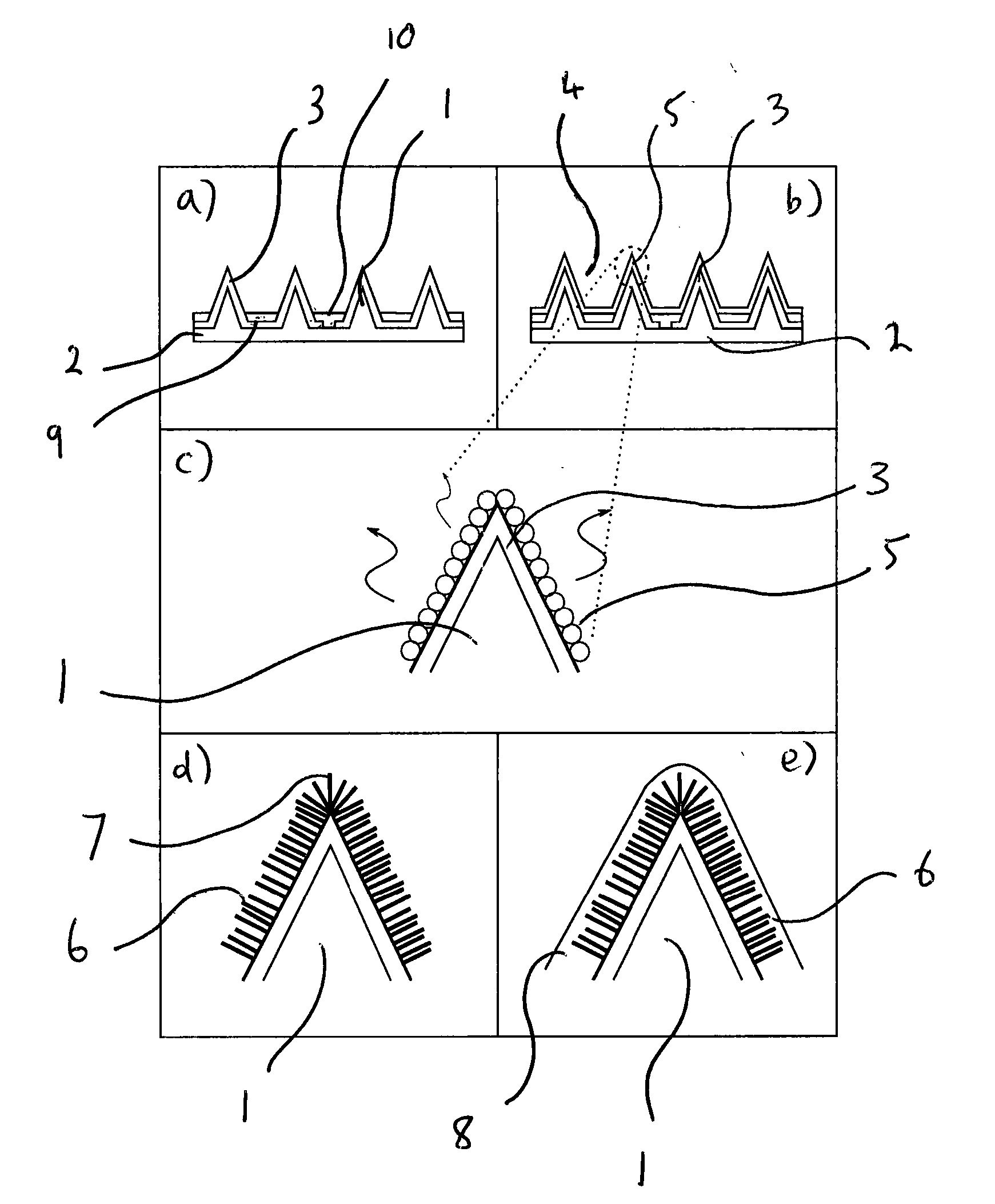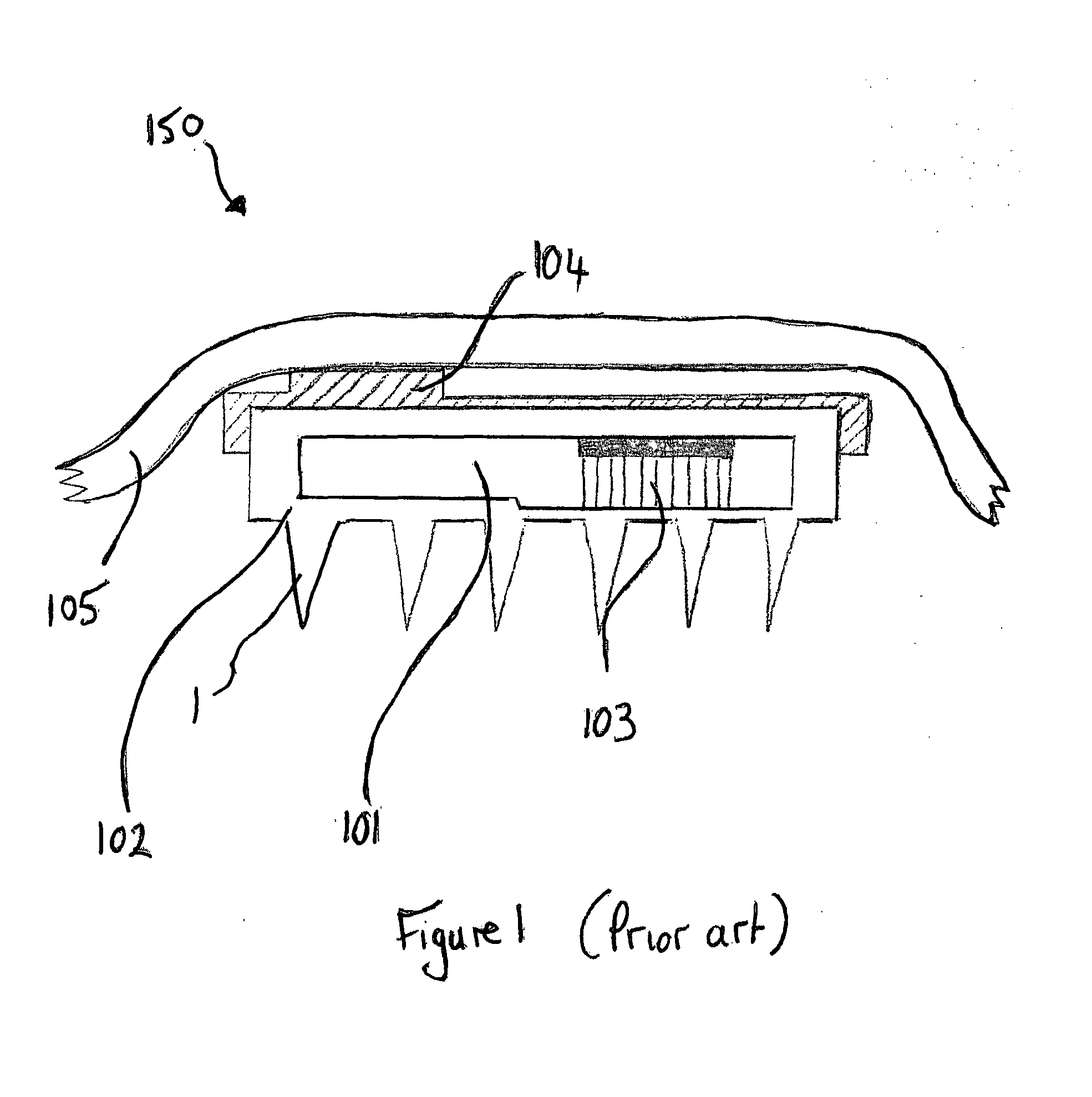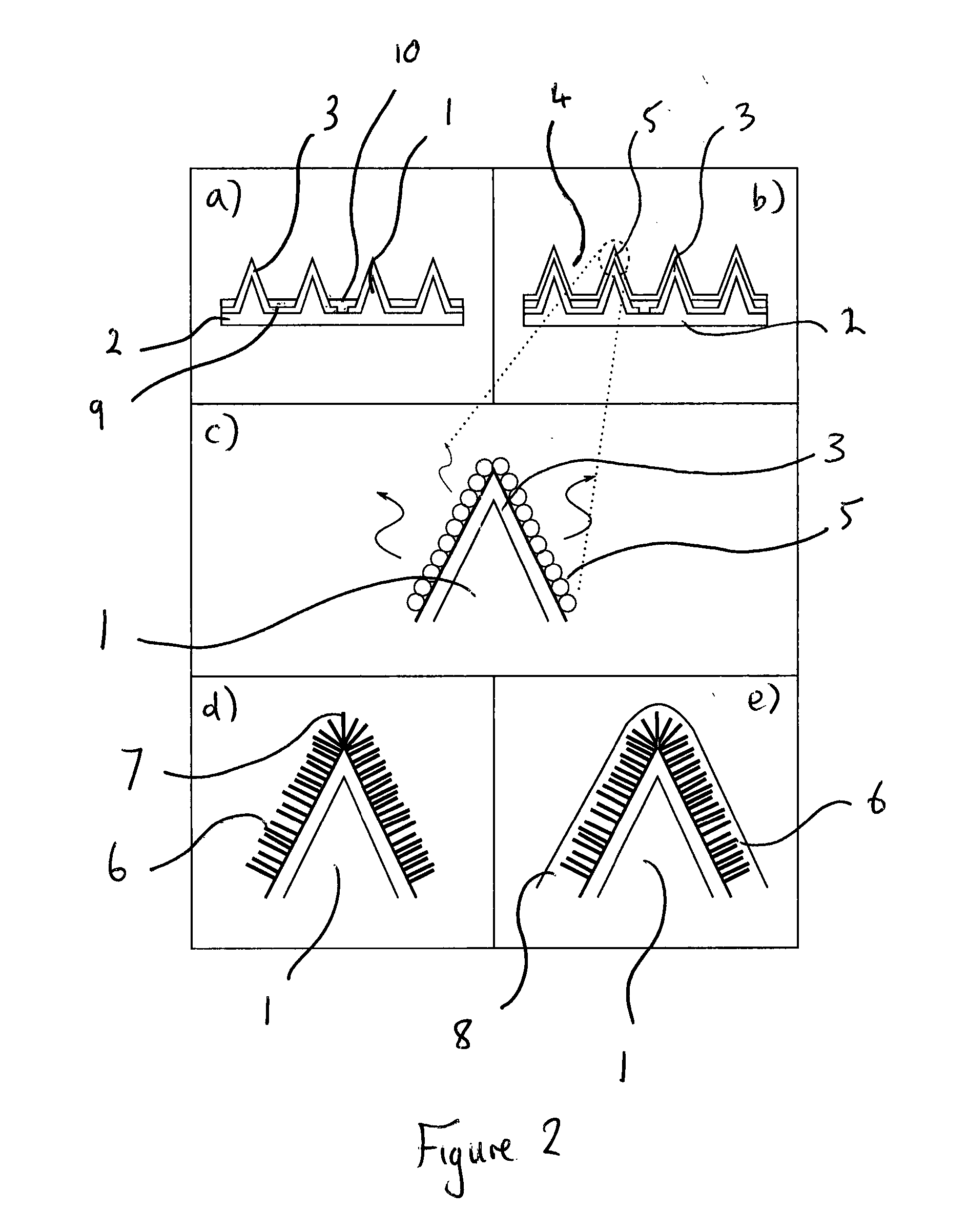Microneedles and method of manufacture
a technology of microneedles and manufacturing methods, applied in the field of microneedles and a manufacturing method, can solve the problems of finger soreness, increase in uncontrollable condition, and inability to allow patients to monitor the glucose level with insulin, exercise, food and other factors
- Summary
- Abstract
- Description
- Claims
- Application Information
AI Technical Summary
Benefits of technology
Problems solved by technology
Method used
Image
Examples
Embodiment Construction
[0039]A prior art biological fluid monitoring device is shown generally as 150 in FIG. 1. The device including microneedles 1 that are used to take up biological fluid, such as interstitial fluid from an individual, a reservoir 101 for receiving the fluid from the body and a sensor 102 that is housed within the reservoir and which analyzes the biological fluid components and composition. The sensor has nanostructures 103 within the body of the sensor and which are associated with an electrode for the sensor and these nanostructures having large surface to volume ratio increases the sensitivity of the sensor as the biological fluid passes by when flowing through the reservoir. The nanostructures are grown from an electrode on an electrode support that can be attached to surface of the sensor and in effect forms part of the sensor. The nanostructures are preferably in the form of aligned wires as shown and are grown using hydrothermal technique from a seed layer on the electrodes that...
PUM
 Login to View More
Login to View More Abstract
Description
Claims
Application Information
 Login to View More
Login to View More - R&D
- Intellectual Property
- Life Sciences
- Materials
- Tech Scout
- Unparalleled Data Quality
- Higher Quality Content
- 60% Fewer Hallucinations
Browse by: Latest US Patents, China's latest patents, Technical Efficacy Thesaurus, Application Domain, Technology Topic, Popular Technical Reports.
© 2025 PatSnap. All rights reserved.Legal|Privacy policy|Modern Slavery Act Transparency Statement|Sitemap|About US| Contact US: help@patsnap.com



